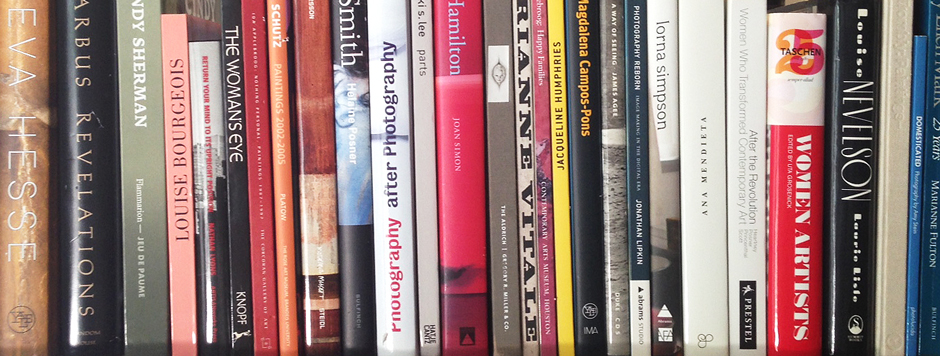
Fictional Female Artists in Novels by Women Writers
A bibliography from guest author Marilyn Hoder Salmon
Novels arise out of the shortcomings of history
- Novalis, 1799-1800
When a woman novelist portrays a woman artist painting in her studio, the reader is invited to reflect upon women’s creativity and their struggles to attain a space in which to create.
- Roberta White, A Studio of One’s Own: Fictional Women Painters and the Art of Fiction
It may be surprising to discover how much fiction there is in this category, over 500 novels listed in an Internet search. As a recurring theme in women’s fiction we look to nineteenth-century women writers who often created women protagonists undertaking professional lives in all the arts. Unlike other careers, these vocations are known to require unlimited dedication and self-fulfilling achievement, thereby revealing the limitations traditionally applied to women’s lives. Modern literature carries this theme forward.*
Additional Suggestions:
|
The Tenant Of Wildfell Hall, by Anne Bronte (1848), (Reprints Available), (and excellent Masterpiece Theatre production) |
 Women Artists, Women Exiles (short stories), by Constance Fennimore Woolson, (1870-1880s), (Reprints Available) |
The Sandcastle, by Iris Murdoch (1957) |
Happenstance, by Carol Shield (1980) |
|
The Truth About Lorin Jones, by Alison Lurie (1988) |
The Serpent Garden, by Judith Merkle Riley (1996) |
The Serpentine Cave, by Jill Paton Walsh (1997) |
Stone Field, True Arrow, by Kyoko Mori (2000) |
|
Lydia Cassatt Reading the Morning Paper, by Harriet Scott Chessman (2001) |
The Passion of Artemisia, by Susan Vreeland (2002) |
The Painter From Shanghai, by Jennifer Cody Epstein (2008) |
I Always Loved You, by Robin Oliveira (2014) |
|
Leonora: A Novel Inspired by the Life of Leonora Carrington, by Elena Poniatowska (translated by Amanda Hopkinson, 2015) |
Biography / Memoir:
|
Frida: A Biography of Frida Kahlo, by Hayden Herrera (1983) |
Diane Arbus: A Biography, by Patricia Bosworth (1984) |
Unexpected Journeys: The Art and Life of Remedios Varos, by Janet A. Kaplan (1988) |
Georgia O’Keefe: A Life, by Roxana Robinson (1989) |
|
Louise Nevelson: A Passionate Life, by Laurie Lisle (1990) |
Persepolis (graphic memoir), by Marjane Satrapi (2003), (sequel, The Story of a Return) |
We Flew Over the Bridge: The Memoir of Faith Ringgold (2005) |
Dorothea Lange: A Life Beyond Limits, by Linda Gordon (2010) |
About the Author
Marilyn Hoder-Salmon is an literature educator and writer based out of Coconut Grove, in Miami, FL. She holds a Bachelor, Florida Atlantic University, Boca Raton, 1967; Master of Arts, University Miami, Florida, 1976; Doctor of Philosophy, University New Mexico, Albuquerque, 1983.
She is a pioneering activist of women's and civil rights and has held various positions in higher education including director communications Urban League Miami, Florida, 1968—1976, founding director Women's Studies Program Florida International University, Miami, 1982—1999, associate professor English, since 1995, Director Fulbright-Hays Group Project Abroad, Madras, India, 1989. Awards include the Breaking the Glass Ceiling Award presented by the Jewish Museum of Florida-FIU, 2013,
Writing include the book Kate Chopin's The Awakening: Screenplay as Interpretation, 1992, Collecting Scholar's Wives, 1978, and an introduction for The Mortal Storm, 1998.
*For additional suggestions, questions or comments, email at hodersm [@] fiu.edu.





























